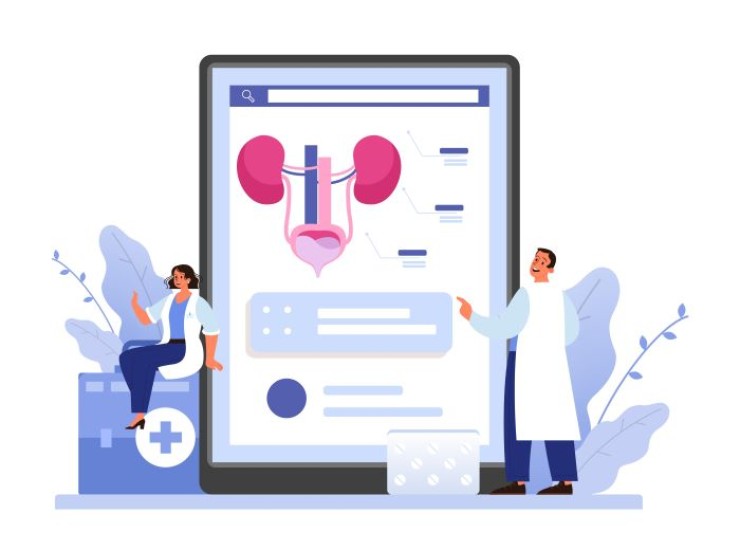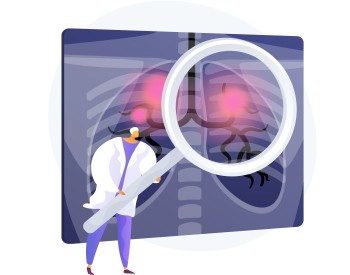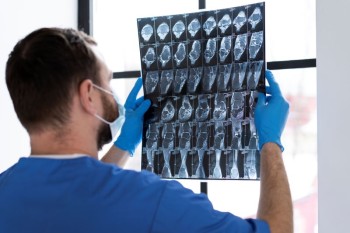
CT KUB Plain Scan plays a crucial role in achieving precision in renal imaging, offering detailed views of the kidneys, ureters, and bladder to identify conditions such as kidney stones, tumors, or structural abnormalities.
CT KUB Plain Scan in India with Cost
CT KUB Plain Scan:
Illuminating Renal Clarity
Introduction
Exploring Renal Health with CT KUB Plain Scan
CT KUB Plain Scan, focusing on the kidneys, ureters, and bladder, stands as a pivotal diagnostic tool for assessing renal conditions. This comprehensive guide aims to unravel the significance, procedure, and applications of CT KUB Plain Scan, providing a thorough understanding of its role in renal imaging.
Understanding CT KUB Plain Scan
What is CT KUB Plain Scan?
CT KUB Plain Scan, or Computed Tomography Kidneys, Ureters, and Bladder Plain Scan, is an advanced imaging procedure that utilizes computed tomography to capture detailed cross-sectional images of the renal system. This non-contrast scan offers a clear view of renal structures without the use of contrast agents.
The Significance of CT
KUB Plain Scan
Precision in Renal Imaging
CT KUB Plain Scan plays a crucial role in achieving precision in renal imaging, offering detailed views of the kidneys, ureters, and bladder to identify conditions such as kidney stones, tumors, or structural abnormalities.
Evaluation of Renal Anatomy
With high-resolution images, the scan facilitates a comprehensive evaluation of renal anatomy, aiding healthcare professionals in diagnosing and planning appropriate interventions.
The Procedure: A Step-by-Step Guide
Patient Preparation
Patients undergoing CT KUB Plain Scan typically require minimal preparation. It's essential to communicate any allergies or relevant medical history to the healthcare team.
Image Acquisition
The CT scanner captures multiple high-resolution images, providing detailed cross-sectional views of the kidneys, ureters, and bladder without the use of contrast agents.
Applications of CT KUB Plain Scan
Diagnosing Kidney Stones
CT KUB Plain Scan is highly effective in diagnosing kidney stones, offering precise images that assist in determining the location, size, and characteristics of the stones.
Identifying Renal Tumors and Structural Abnormalities
The detailed imaging capabilities of this scan make it an invaluable tool for identifying renal tumors, cysts, or other structural abnormalities affecting renal health, contributing to accurate diagnoses.
Advantages and Considerations
Advantages of CT KUB Plain Scan
Clear Visualization of Renal Structures
CT KUB Plain Scan provides clear visualization of renal structures, ensuring accurate assessment and aiding in the identification of various renal conditions.
Quick and Non-Invasive Procedure
The procedure is relatively quick and non-invasive, contributing to patient comfort and ease of examination while delivering high-quality diagnostic information.
Considerations and Precautions
Radiation Exposure
As with any CT scan, consideration is given to radiation exposure. The healthcare team carefully evaluates the benefits against the risks for each patient.
Conclusion
In conclusion, CT KUB Plain Scan emerges as an essential diagnostic tool, providing detailed and high-resolution images for precise assessment of renal conditions. From kidney stones to tumors, this imaging technique significantly contributes to enhancing renal health diagnostics.
FAQs: Clarifying CT KUB
Plain Scan
1. Is CT KUB Plain Scan a painful procedure?
No, the procedure is generally painless. Patients may experience slight discomfort lying still during the scan.
2. How long does a CT KUB Plain Scan take?
The procedure typically takes around 15 to 30 minutes, depending on the patient's condition.
3. Are there any dietary restrictions before a CT KUB Plain Scan?
Generally, there are no specific dietary restrictions for this scan. However, patients are advised to follow any instructions provided by the healthcare team.
4. Can pregnant women undergo CT KUB Plain Scan?
While generally safe, precautions are taken for pregnant women, and alternative imaging methods may be considered.
5. How often is CT KUB Plain Scan recommended for follow-up examinations?
Follow-up scans are scheduled based on the individual's medical history and the presence of specific renal conditions.
6. Can CT KUB Plain Scan detect urinary tract infections (UTIs)?
CT KUB Plain Scan primarily focuses on imaging structures, and while it may indicate abnormalities related to UTIs, direct detection of infections is typically done through other diagnostic methods.
7. Is CT KUB Plain Scan safe for individuals with kidney-related issues?
Generally, CT KUB Plain Scan is safe for individuals with kidney issues. However, the healthcare team assesses each case individually, considering factors such as contrast usage and radiation exposure.
8. Are there alternatives to CT KUB Plain Scan for renal imaging?
Yes, alternatives such as ultrasound and intravenous pyelogram (IVP) exist. The choice depends on the specific diagnostic needs and the patient's condition.
9. Can CT KUB Plain Scan identify congenital kidney abnormalities?
Yes, CT KUB Plain Scan is effective in identifying congenital kidney abnormalities, providing detailed images for accurate diagnosis.
10. How soon can one receive CT KUB Plain Scan results?
The turnaround time for results varies, but in many cases, healthcare providers aim to provide results promptly to expedite the diagnostic process.
(0)
Login to continue



